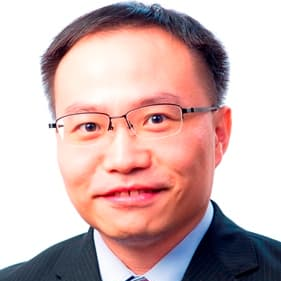Advanced Electric Devices and Technologies for Electric-Drive Robotics
A special issue of Energies (ISSN 1996-1073). This special issue belongs to the section "D: Energy Storage and Application".
Deadline for manuscript submissions: closed (31 December 2017) | Viewed by 39408
Special Issue Editors
Interests: electric machines and drives; electric vehicles and aircraft; electric robotics and ships; renewables and microgrids; power electronics and wireless power transfer
Special Issues, Collections and Topics in MDPI journals
Interests: the advanced control for power conversion with emphasis on wireless power transfer and motor drives
Special Issues, Collections and Topics in MDPI journals
Interests: power electronics; electric machines and drives; magnetic devices
Special Issue Information
Dear Colleagues,
We are inviting submissions to a Special Issue of Energies on the subject area of “Advanced Electric Devices and Technologies for Electric-Drive Robotics”.
Robotics is becoming one of the key technologies for the next industrial revolution. Among different types of robotics, the electric-drive type possesses the distinct merit of electric propulsion. In fact, the electric devices and corresponding technologies have been widely applied in different electric robotics, including the industrial robots, humanoid robots, biomimetic robots, and other robotic formats and styles. The electric devices for robotics obviously have the advantages of easy control, high robustness, high flexibility, high cost-effectiveness, fault-tolerant capability, mature technique, and so on. Additionally, the corresponding electric technologies promote the fast development of electric robotics, which significantly benefit the robotic design and control. This Special Issue is focused on the latest results and findings of new electric devices and technologies of electric-drive robotics, including the design principle, topology, analysis approach, control strategy, new application, management, coordination, energy conversion, as well as the foresights. The particular topics of interest include, but not limited to, the following:
- Design and analysis of architecture/topology for electric-drive robotics;
- Development of novel electric machines for robotic propulsion;
- Research on direct drive techniques for electric robotics;
- Fault diagnose and fault-tolerant control for electric drives of robotics;
- Design of power-electronic-based power converters for electric-drive robotics;
- Control and management of energy storage systems for electric-drive robotics;
- Electric devices for energy conversion and utilization for electric-drive robotics;
- Contactless charging strategies for electric-drive robotics, i.e., wireless power transfer;
- Advanced control strategies for electric-drive robotics;
- Newly designs and applications of electric-drive robotics;
- Overviews and foresights of electric devices and technologies for electric-drive robotics.
Dr. Chunhua Liu
Dr. Zhen Zhang
Dr. Fei Zhao
Guest Editors
Keywords
- Electric-drive robotics
- power electronics
- electric machines and drives
- energy conversion
- wireless power transfer
- electric device
- advanced control
- direct drive







